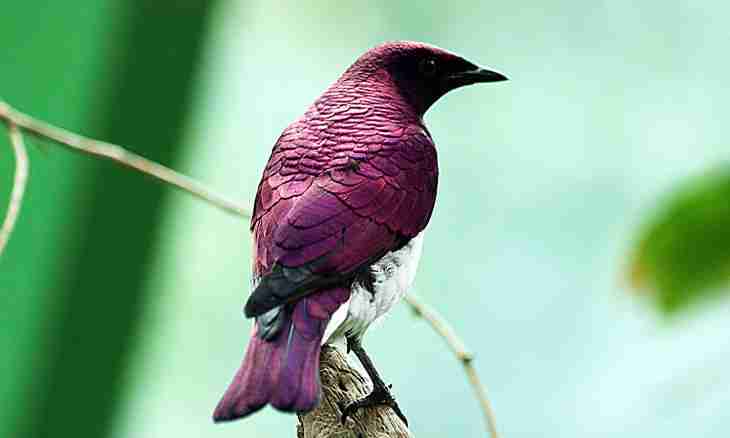Starling – a bird from Vorobyinoobraznye group, the Skvortsovye family and a genus of Starlings. It also treats singing type and is widespread in all countries of Europe, partially in South Africa, North America, in Australia and New Zealand. Some individuals lead settled lifestyle, and others – flying. It depends on the habitat of starlings.
Instruction
1. How do these birds look? Starlings quite small, with a length of body only 18-22 centimeters at adult individuals. At the same time the wingspan at birds of this sort reaches 40 centimeters, and weight – 75-80 grams. For animal such size at a starling quite massive body with a short neck on which there is a long and sharp beak, slightly curved from top to bottom. And the beak can change, depending on a season: during reproduction it yellow, and in all rest of the time – black.
2. On closer examination the brown iris of an eye, wide in the basis and the wings which are made narrower by the ends which, in relation to other body, look quite short can distinguish a starling from other birds. Externally males and females do not differ from each other: they are equally black, it is frequent with metal gloss and a greenish, violet or lilac outflow at edges of feathers. A tail at a starling short, in only 6-6.5 centimeters at the adult bird direct on the tip.
3. Starlings prefer to lodge in flat places, without rising highly to hilly terrains. Well gets on with neighbors not only in the wild nature, but also near the person. Ordinary it is never farms, villages and settlements, but practically noisy and big cities. Swamps, saline soils, the thin forest and steppes belong to habitats of birds.
4. Average life expectancy of starlings, according to data of the Kaliningrad ornithologists, in the wild nature makes 12 years. The marriage season at birds of this look is the share of early spring, right after migration. So in the Northern hemisphere of the planet it is March-July, and in the Southern hemisphere – September-December. In a year there are three layings of eggs of starlings. The first – right after a reproduction season, the second in 25-30 days and the third in 45-55 days after the first.
5. Starlings are omnivorous birds who can be content with both vegetable, and animal food. They love earthworms, larvae of insects, grasshoppers, caterpillars, spiders and butterflies and also seeds and fruits of various berries, apples, pears, plums and other plants. Unfortunately, starlings, in case of their plentiful congestion in one place, can also cause a serious loss to landings of grain crops or vineyards. Starlings are quite clever birds. For example, if the found fruit is protected by very firm cover, they look for a small hole in a surface, implant into it a beak and unclench a cover like action of a small lever. Then reach desirable juicy food.
